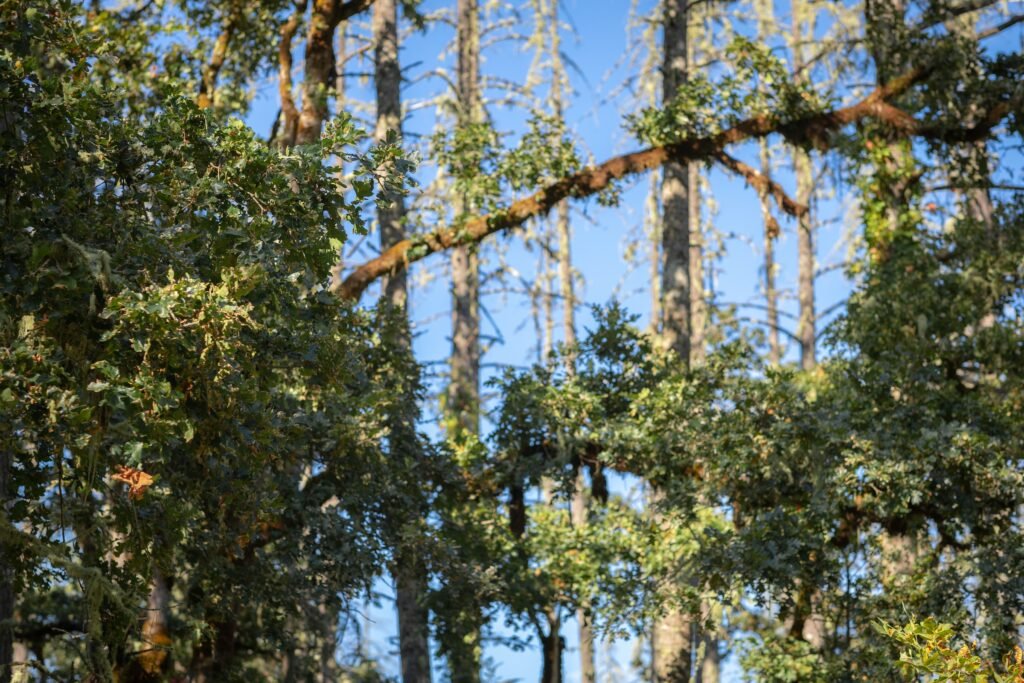Pruning and trimming trees stand as vital practices in upholding the vitality and visual appeal of a landscape. Yet, numerous homeowners and property managers frequently find themselves pondering queries about the intricacies of the tree trimming process, its advantages, and the selection of proficient professional services for this task. Within this all-encompassing guide, we delve into a spectrum of commonly posed questions, aiming to offer lucidity and valuable perspectives on the realm of tree trimming.

Why is Tree Trimming Necessary?
Tree trimming serves several crucial purposes. Primarily, it contributes to the overall health of the tree by systematically eliminating dead or diseased branches. This prevents the spread of diseases and promotes new growth. Secondly, trimming enhances the tree’s aesthetics, shaping it to fit the desired form and improving the overall appearance of the landscape. Lastly, regular trimming can address safety concerns by removing branches that may pose a risk of falling.
How Often Should I Trim My Trees?
The frequency of tree trimming is contingent upon diverse factors, encompassing the tree species, its age, and the specific climatic conditions in the local environment. As a general rule, it’s advisable to trim most trees annually. Nonetheless, certain rapidly growing species may necessitate more frequent trimming, whereas those with slower growth rates might only require attention every 2-3 years. Consulting with a professional arborist can help determine the specific needs of your trees.
Can I Trim My Trees Myself?
While some light pruning can be done by homeowners, extensive or large-scale tree trimming should be left to professionals. Tree trimming requires specific knowledge of tree biology, proper equipment, and safety protocols. Attempting to trim large trees without the necessary expertise can result in accidents, damage to the tree, or even personal injury. It’s always best to hire a certified arborist or tree trimming service for significant tree maintenance.
What is the Best Time of Year to Trim Trees?
The timing of tree trimming depends on the type of tree and its specific needs. Typically, the late fall or early winter, a period when trees enter dormancy, stands out as the opportune time for the majority of tree species. This dormant period minimizes stress on the tree and reduces the risk of disease transmission. However, some trees, such as spring-flowering varieties, are best pruned immediately after flowering. Consulting with a tree care professional can help determine the optimal time for trimming based on your specific trees.
How Much Does Tree Trimming Cost?
The cost of tree trimming varies based on factors such as the size and type of tree, its location, and the extent of the trimming needed. Small trees with minimal trimming requirements will cost less than large, mature trees that require extensive pruning. Additionally, emergency tree trimming services may incur higher costs. It’s advisable to obtain quotes from several reputable tree trimming services in your area to get a better understanding of the potential costs.
Do I Need a Permit for Tree Trimming?
In many cases, you won’t need a permit for routine tree trimming on your private property. However, regulations can vary depending on your location, and certain municipalities may have specific guidelines regarding tree care. It’s essential to check with your local city or county government to understand any permit requirements before initiating tree trimming activities. Professional tree trimming services often have knowledge of local regulations and can assist with the permitting process if necessary.
What Are the Signs That My Tree Needs Trimming?
Several signs indicate that a tree requires trimming. These include dead or hanging branches, excessive learning, overgrown limbs, and signs of disease or pest infestation. If you notice any of these issues, it’s crucial to consult with a tree care professional promptly. Early intervention through proper trimming can prevent further damage and promote the overall health of the tree.
Can Tree Trimming Prevent Storm Damage?
While tree trimming cannot guarantee complete protection against storm damage, it can significantly reduce the risk. Properly trimmed trees are more aerodynamic and less likely to suffer from wind resistance. Removing dead or weak branches also minimizes the chances of these branches breaking off during a storm. Regular tree maintenance, including trimming, is an integral part of storm preparedness for homeowners and property managers.
What Should I Look for in a Tree Trimming Service?
When hiring a tree trimming service, it’s essential to consider several factors. Look for a service that is licensed and insured, with certified arborists on staff. Check for references and reviews from previous clients. A reputable tree trimming service will provide a detailed estimate of the work to be done, including costs and timelines. Avoid services that provide vague or overly low estimates, as these may indicate a lack of professionalism or hidden fees.
How Can I Maintain My Trees After Trimming?
After a professional tree trimming service completes the work, there are steps you can take to maintain the health and appearance of your trees. Water the trees regularly, especially during dry periods, to promote new growth. Apply mulch around the base of the tree to retain moisture and suppress weeds. Additionally, monitor the trees for signs of pests or diseases, and consult with a tree care professional if you notice any issues.
In conclusion, understanding the basics of tree trimming services is crucial for homeowners and property managers looking to maintain a healthy and vibrant landscape. By addressing these frequently asked questions, individuals can make informed decisions about when, why, and how to trim their trees, ensuring the long-term health and beauty of their outdoor spaces. If in doubt, it’s always best to consult with a professional tree trimming service for personalized advice and expert care.